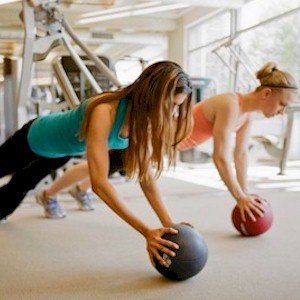 Imagine you’re suddenly unable to pick up a 10lb bag of potatoes off the floor and onto the counter. Or you can’t find the strength to lift yourself out of your car, or you’ve just tripped on the foot of the stairs, twisting your ankle, and not able to stand up.
Imagine you’re suddenly unable to pick up a 10lb bag of potatoes off the floor and onto the counter. Or you can’t find the strength to lift yourself out of your car, or you’ve just tripped on the foot of the stairs, twisting your ankle, and not able to stand up.
Although these may sound like everyday simple routine physical tasks that you take for granted, how would not being able to do these daily common functions affect you. If you’ve suddenly lost the ability to complete these easy movements of basic living.
Imagine if you happened to lose the strength to perform these functional movements, the end result being you lose the ability to care for yourself, which requires extended help.
For Bodily Function
These basic yet functional body movements are required for our independence, yet we take them as routine. If you happen to lose the strength or the will to complete them, the quality of your life will radically change drastically.
Once your body considers its ability to handle these core movements, there are three areas of the body which needs to be strengthened, and they are: balance, basic core strength, and flexibility.
Basic Core Strength And Stability
Core strength in the body and the abdomen are considered synonymous, but not always the case. The base core consists of a variety of muscles which runs the length of the torso and into the trunk.
Once these muscles contract, what that movement does is it stabilizes the spine, the pelvis, and the shoulder girdle, which creates a solid base of lateral support.
If the core muscles happens to weaken, then you’re likely to develop conditions such as lower back pain, rotator cuff tendinitis, and even chronic headaches.
Those who have weak core muscles often also experience poor lumbar curves along with an unnatural swayback of the spine, which usually causes a great deal of stress and pain directly on the lower back region.
The inability to stabilize the trunk can at times lead to impairment in the body’s basic ability to fully transfer movement, this between the arms and the legs.
Know Your Body
So keep this in mind when performing simple acts such as picking up a bag of groceries. Whenever you do so, always note how your body reacts, the specific area if pain is felt.
You’ll then start bending at the torso and the legs, which automatically engages your core stabilizers. Once you’re engaged, you’ll make micro-adjustments, this to stabilize your balance.
What doing so ensures that you don’t fall over, this by doing the squatting motion, this so you can painlessly lift the groceries off of the floor without landing on your face.
As the movement progresses, you’ll naturally further engage the muscles in your front torso and the lower back, this while placing the groceries down. Wow, that sounds like a full-body workout.
Proper Flexibility And Balance
When it comes to functional movement, balance and flexibility can’t be separated. To understand how these two movements are related to your daily life, what’s involved is the concept of proprioception.
Proprioception is the natural ability of sensing the position, location, orientation, and the movement of your body, this along with all of its moving parts.
It may sound like a pretty basic concept, but think back to the last time you tripped or stumbled, and then how you regained your composure, this instead of falling head first.
Or pay close attention to the next time you stand on a stepladder or a chair. You sharpen your senses to know and control exactly where your limbs and your body are spatially.
It’s an automatic response and a natural reaction. However, if you don’t challenge your mind and your body to fine tune your balance and flexibility, the proprioception then becomes weakened.
As Simple As Balance
Your body’s balance and flexibility enhances the quality of your life. So make sure you implement balance training into your exercise program, as it’s essential and recommended.
Once getting proper balance training, you’ll also simultaneously improve your core strength along with increasing the stability, strength, and mobility of your joints.
Mobility and stability in the joints refers to the amount of resistance that’s offered by the tendons, the tissues, and the muscles which surrounds it.
Once this resistance is trained to become strong and quick, then your body has the ability to adjust and then react to any unexpected movement.
However, if your ligaments and your muscles, or the supporting structure happens to be weak or react slow to activate, then the joints may move in unnatural positions, which can result in pain or injury.
Functional Training For Optimized Health
Functional training is once your body movements mimics the way the body reacts, this in multiple joint actions on multiple planes, all which requires sufficient muscle strength, stabilization, and coordination.
Fitness equipment which helps to perform this functional equilibrium training includes: exercise balls, balance boards, kettle balls, and power plates.
Body weight exercises can also be effective when developing basic functional fitness. These include sit-ups, side and front planking, squats, back bridges, oblique twists, and balancing on one leg.
Incorporating Functional Fitness
Fitness programs which incorporates all three functional fitness protocols directly into their training, are Pilates, Yoga, or CrossFit, along with several popular DVD based programs.
The adage that’s often used is, “use it or lose it,” which becomes accurate once we begin to age, as our bones, muscles, and joints begins to lose their effectiveness.
So make sure that you start implementing functional fitness exercises into your daily regime, which will compliment your active lifestyle today, while ensuring a pain free future.
